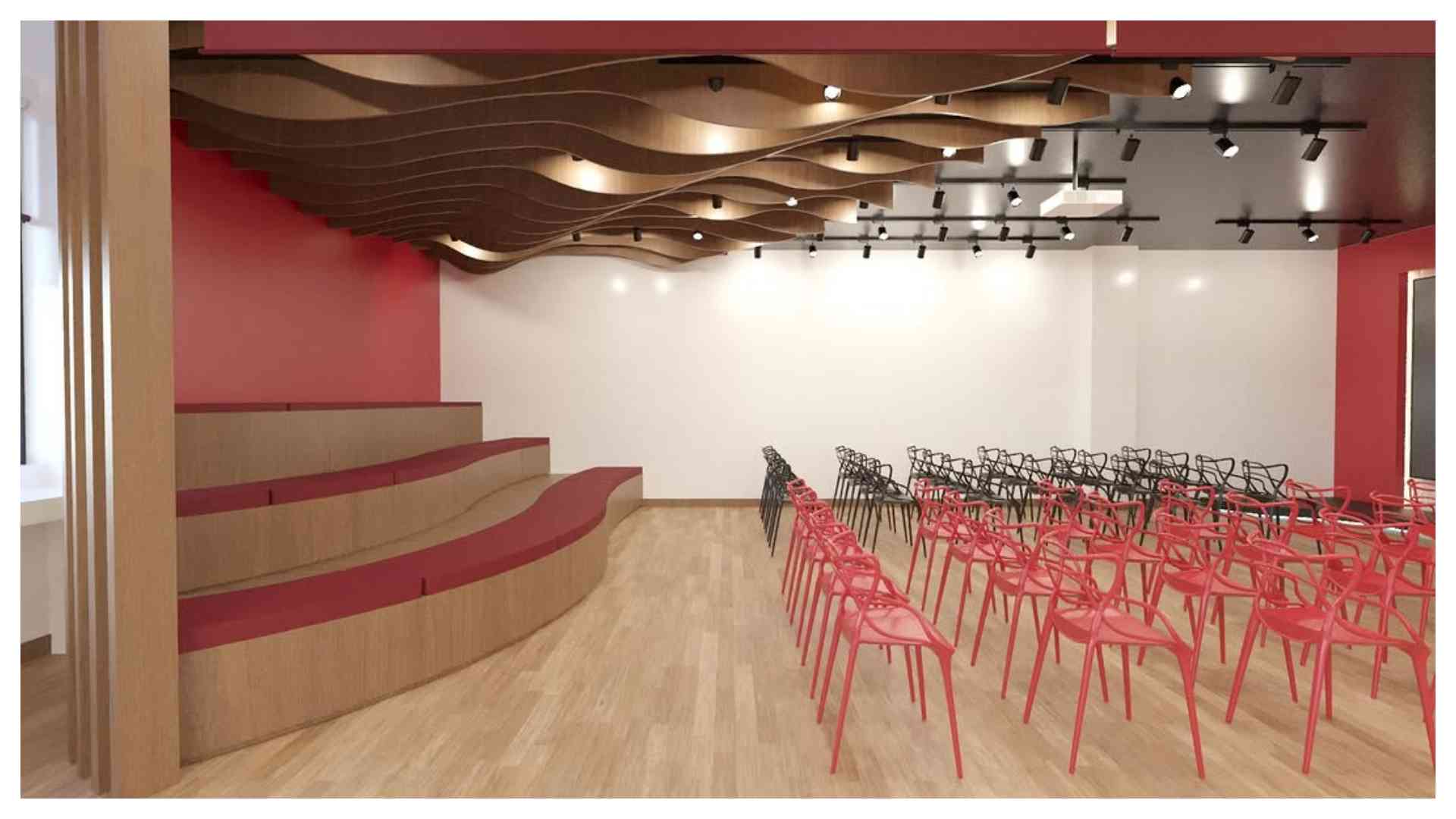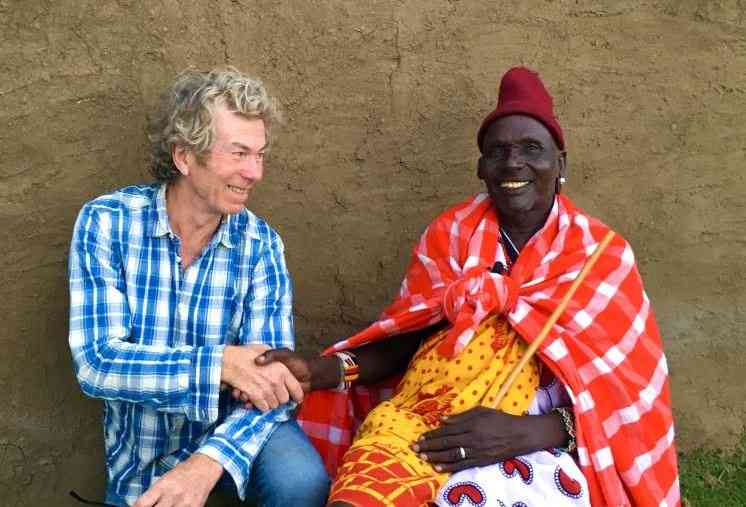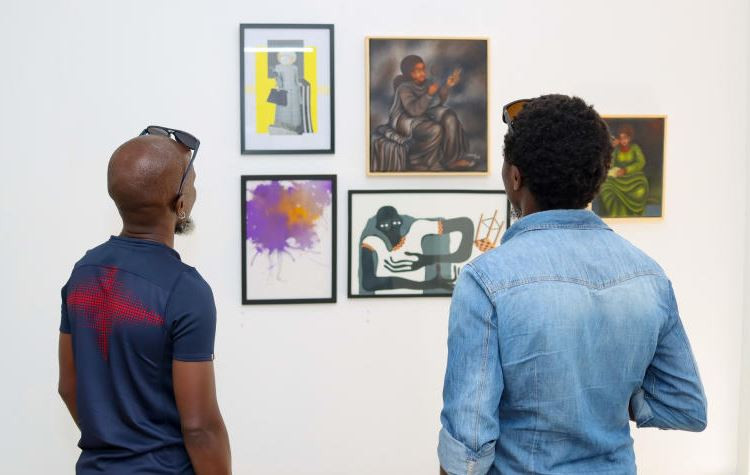
The last couple of weeks have seen the creative industry come together and join the country-wide protests using songs and art to pass their message across.
From Juliani’s Utawala, Eric Wanaina's Daima Mkenya or the latest protest anthem Whips za Zakayo by Deco, artistes have proven that they not only have a liking for art but for their country as well.
“When we did Unbwogable more than 20 years ago, the situation was almost similar to what we are undergoing as a country. The role of music has never changed because one of its main purposes is spirit building, which brings people together,” says Unbwogable hitmaker Maji Maji.
Maji Maji says when unbwogable came into being, political parties were united and got a rallying call under the song, synonymous with the change of regime, that many Kenyans yearned for.
“When you compare the issues back then, it is also similar to what we are seeing. Runaway corruption, blatant opulence and injustices being enforced on people. Currently, Gen Z has taken the protests to another level with many songs being released under the Reject banner,” he adds.
The transformative power of art
“One of the reasons that led me to work in the arts and cultural sector was the transformative power I believed it had. I have seen how artistes can be influential, moving crowds and setting the agenda whether through fashion or even lifestyle. This can be harnessed and used for the changes we want,” says singer Kiddis.
“From time immemorial since the days of Plato to Picasso’s 1937 painting, Guernica, John Lennon’s 1971 song, Imagine, which was a musical plea for unity and Harper Lee’s To Kill a Mockingbird which was a commentary on racism, we have seen music being used to pass certain message to audiences. Songs can convey powerful messages in a way that connects with listeners on an emotional level,” says singer Kimintah.
- Dyslexia ambassador crafting change with art, advocacy
- Mothers' stories of hope in the face of maternal health risks
- Jacaranda Health banks on AI-driven initiatives to support maternal healthcare
- 2024 Mater Heart Run that will cover ten counties launched
Keep Reading
Kimintah is part of the Maa Creatives Network and has been doing provocative music, which he says is meant to bring about change in society by eliciting and instigating the grey areas of the Maa community.
“Our song Kataa Wembe is about fighting female genital mutilation. Although it did not go down well with a section of society, we felt that it was through music that we could reach out to the younger generation which is ripe for change,” he says.
The digital frontier has proven to be a suitable battleground for calling for change. A timely example is the recent digital activism and advocacy that was spearheaded by the GEN-Zs of Kenya in a bid to oppose the Finance Bill.
The revolution contributed to a major policy change as witnessed by the withdrawal of the Finance Bill by President William Ruto. Generation Z utilised digital media for mobilisation and coordination of the protests.

The mobilisation further included successful crowdfunding for injured protesters and families of deceased protesters.
“Gen-Zs used digital media to create awareness and educate the masses about the contents of the bill they were opposing. This was done through short video clips, posters and interviews both in English and vernacular for a wide reach,” says Publicist John Kocha.
Digital natives have used memes to communicate, question, critique, and cope with everyday challenges. From the days of brush strokes evoking and starting a dialogue, digital disruption has allowed for the emergence and growth of the digital creative arts.
As Xiao Mina wrote, memes are the street art of the social web, and like street art, they are varied, expressive, and complex, and they must contend with the existing politics of our public spaces.
“The capacity of memes to empower and resist is impactful, as they serve as platforms that challenge power abuse. Their quick dissemination and ability to evolve make them challenging to suppress, unlike other forms of protest communication,” says Kocha.
When it comes to pushing for change, film has been one of the top platforms used to cause and effect changes. Film can be used in addressing matters of social justice, provoke discussions and inspire positive change.
“Films and documentaries often carry underlying themes such as power, corruption, poverty, gender inequality and religion. This can be used to create awareness of certain social issues by educating and sparking conversations. Similarly, films and documentaries that are based on true stories can be used to highlight complex issues such as disability, health, justice, and racism,” says film producer Diana Kayode.
Diana says personal experiences can create empathy in audiences as well as challenge stereotypes and prejudices. An example of such a documentary is 'The Last Door' hosted by journalist John Allan Namu. The series reveals hidden truths about infamous crimes in Kenya.
“Film premieres and festivals are instrumental in fostering community engagement and dialogue. This is effectively done through film screenings and workshops. It creates an opportunity to have candid discussions about the themes highlighted in films, some of which directly affect our communities. Such discussions create a deeper understanding of these themes/issues by the locals and provide a platform for solutions to be invented,” she says.
Filmmakers and the masses also can use their social media platforms to promote activism and call for leaders to support their cause.
Fashion as a champion of change
Since the start of the 20th Century, fashion has employed shared symbolism to champion a variety of social justice movements, including the feminist agenda and other interests, up to the present day.
“Fashion has always been a reflection of social, cultural and political changes. It has the power to influence and shape the world we live in. Recently, fashion has been used as a tool for social change following the ongoing protests regarding the Kenyan Finance Bill 2024,” says Jemo Curliwear, a fashionista and youth activist.
“Fashion influencers used their platforms to raise awareness about the Finance bill and other social injustices. On the streets of Nairobi, we saw Gen Zs flock with branded garments displaying their concerns. They also wore the black colour to show the seriousness and power of the people,” he adds.

While naysayers might see graffiti as a form of vandalism, the opposite is also true. Using graffiti as a tool for social change is one of the cool ways to communicate to the masses.
Graffiti as a Hip Hop subculture that combines different modes of visual communication, which often include symbols, pictures and writings.
“This a powerful tool to communicate social and environmental issues, because it’s a cool language, and it’s art; art can touch people differently. Artistes, using their work as a form of visual activism, have been amplifying awareness of pressing issues, including political, environmental, and social injustices,” says Ali Juma, from Mombasa.
He adds, “During the pandemic, we used this form of art to communicate, especially to those in informal settlements on what they needed to do and I think it worked.”
 The Standard Group Plc is a multi-media organization with investments in media platforms spanning newspaper print
operations, television, radio broadcasting, digital and online services. The Standard Group is recognized as a
leading multi-media house in Kenya with a key influence in matters of national and international interest.
The Standard Group Plc is a multi-media organization with investments in media platforms spanning newspaper print
operations, television, radio broadcasting, digital and online services. The Standard Group is recognized as a
leading multi-media house in Kenya with a key influence in matters of national and international interest.











